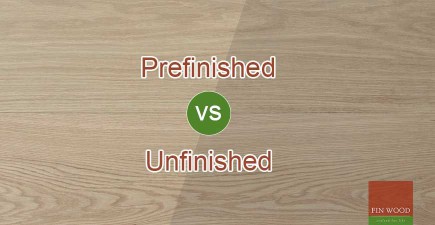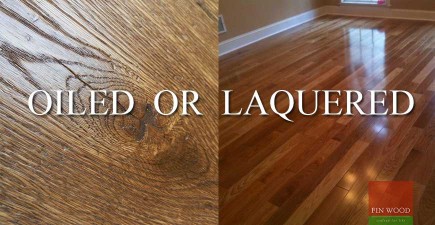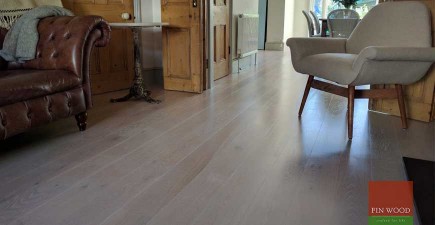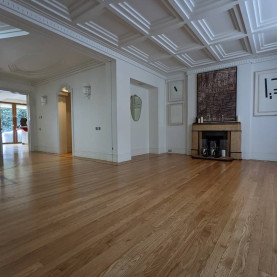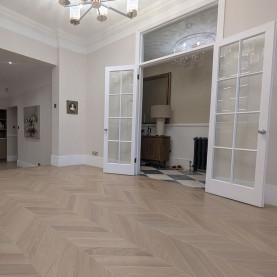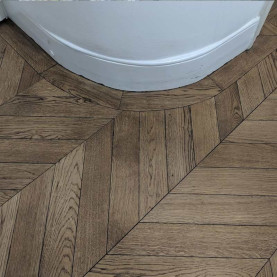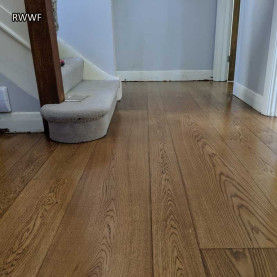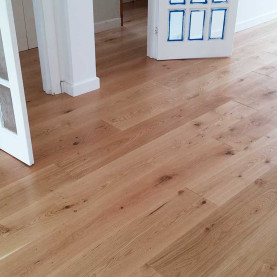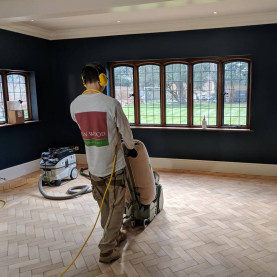Everything you need to know about a Bevel Edge on Wood Flooring
What Is Bevelled Edge Flooring?
To understand why wooden flooring features a bevelled edge, it helps to look at the manufacturing process. Once the tree is harvested, the wood is kiln dried and then cut into planks. All of the cut boards are rectangular with a simple straight crisp edge. Next step is to create a tongue and groove profile which is then routed into the sides of the plank. This process isn’t 100% accurate as the cutting process produces small vibrations which creates ridges at the sides of the board. Also it is unlikely the subfloor will ever be perfectly flat. This means that they won’t be completely level when they are butted up against each other.
This isn’t an issue with an unsealed wooden floor, as through the subsequent sandeding stage the discrepancies in the levels will be smoothed down, prior to sealing. However, this isn’t possible with a pre-finished floor (which is supplied with an oil or lacquer finish already applied), so manufacturers go along the board to remove the sharp edge by creating a bevel.
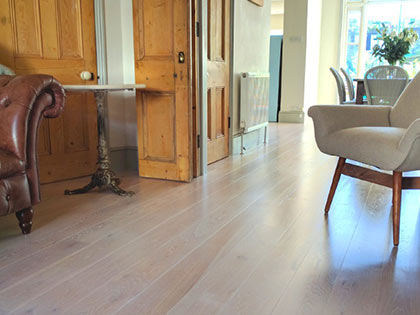
A pre-sealed wooden floor with a small bevel
The size of the bevelled edge on wood flooring and what this means If good machinery is used, the bevel can be very discreet and as small as 1 mm. However, on cheap, inferior boards, the bevel can be as large as 2 to 4 mm, as a larger gap is required to disguise the poor manufacturing techniques. As the edges of the board are further apart, it’s harder to see the difference in levels. If manufacturers don’t have the correct machinery, it also becomes difficult to produce precise cuts at the end of the boards, so bevelled edges may be used here as well. In this case, the bevelled edge is not a design feature, as the pronounced bevelled edge all around board defines each one too clearly.

Sanded floorboards without any bevels

Sanded floorboards without any bevels
Bevelled edges on wide engineered wood flooring
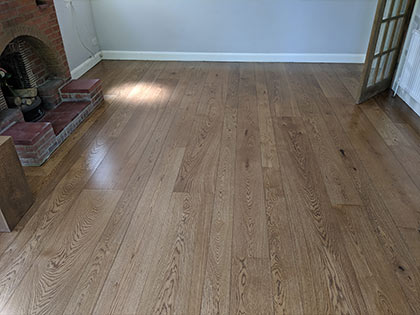
The bevelled edge on this random width oak floor helps to accentuate each board, acting as a design feature
That’s not to say that bevelled edges should be avoided. The definition they create can be an asset on very wide, premier grade engineered boards. Without knots and a pronounced grain, the boards can all merge together. In this case, the groove between the planks helps to mark the beginning and end of each board.
Alignment of wooden flooring with a bevel edge
A bevelled edge can dictate the direction in which the wood flooring is laid in relation to the natural light in a room. If the flooring is laid across a window, the light can cast a deep shadow on the groove, which accentuates the edges. This should be avoided, as it makes the bevelled edge appear larger than it actually is.

This wooden floor runs in the direction of the window
Parquet and chevron wood flooring and bevelled edges
A bevelled edge would look out of place on a traditional 280 mm block. There is already plenty of pattern on the smaller blocks, as the change in direction accentuates each join. Bevels on larger, pre-finished blocks, create a more contemporary look and feel. More pictures of parquet flooring that we’ve fitted can be seen here.

This chevron wooden floor doesn’t feature a bevel

This darker chevron floor does, so each block is more clearly defined
Bevelled edges and sanding wood flooring

A deep sand would be required to remove the bevel on this floor
If a floor features a discreet, small bevel it can be removed with a light sand if required. This will be enough to remove the original floor coating, so a new finish and colour can be applied without impacting on the longevity of the floor. However, larger bevelled edges require much deeper sanding, making it necessary to remove up to 3 mm from the surface of the wood and so the lifespan of the floor is drastically reduced. These larger gaps that deep bevels produce can also trap dirt and dust, which can be difficult to remove.
Final words…
In summary, smaller bevels of 1 to 2 mm are easily removed with sanding if required on an unsealed floor. They are a necessary feature on pre-finished flooring and don’t have a negative impact. Wood flooring with wide, deep bevels should be avoided, as they are usually added to hide poor manufacturing techniques and the use of inferior machinery. It’s best to avoid small parquet blocks with a bevelled edge, but they can help to define the edge of larger, more contemporary blocks.
If you are considering buying a floor with a bevelled edge and are unsure about the quality of the wooden floor, we are always happy to offer our advice and expertise. Please contact us for more information.





